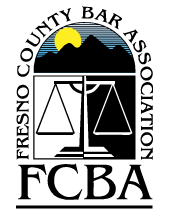How to Treat and Prevent On-The-Job Burns
On-the-job burns are a common occurrence, but they don't have to be. Workers' compensation is there to help workers who suffer from on-the-job burns, but prevention is always better than treatment. In this article, we will discuss how to prevent on-the-job burns, as well as how to treat them if they do occur.
What are workers' compensation benefits for on-the-job burns?
Workers' compensation benefits are available to workers who suffer an on-the-job burn. These benefits can help workers pay for medical expenses, lost wages, and other costs associated with the burn. Burns can be a very serious injury, and workers who suffer a burn on the job may need extensive treatment. Treatment for burns can be expensive, and workers' compensation benefits can help workers cover the costs.
On top of medical expenses, workers' compensation benefits can also help workers pay for lost wages. If a worker is unable to work while they are recovering from a burn, they may be able to collect workers' compensation benefits to help make up for lost income. Burns can also cause emotional and psychological trauma. Workers' compensation benefits may be available to workers who suffer these types of injuries as a result of a burn.
If you have suffered an on-the-job burn, it is important to seek medical attention right away. You should also contact your employer and file a workers' compensation claim. The workers' compensation system can be complex, so it is important to get the help you need as soon as possible to ease you through the process.
How do workers prevent on-the-job burns from happening in the first place?
Workers can take a number of precautions to help prevent on-the-job burns from happening. Following the proper safety protocols, using the correct protective gear, and being aware of potential hazards are all important steps that workers can take to protect themselves from burns.
In addition, workers should always be aware of their surroundings and what could potentially cause a burn. Hot liquids, open flames, working with any kind of steam, and hazardous chemicals are just a few of the things that workers need to be cautious of while on the job.
If a worker does experience a burn, it is important to seek treatment immediately. Burns can often lead to infection if not treated properly, so it is important to get medical help as soon as possible.
What jobs are most likely to have on-the-job burns?
Workers who are employed in certain industries are more likely to suffer from on-the-job burns. According to the National Center for Biological Information (NCBI), workers in the following industries are at a higher risk for job-related burns:
Manufacturing workers
Food preparation and restaurant workers
Electric company workers
Transportation workers
Construction workers
Chemical plant workers
These workers can sustain burns from many different sources, including flames, scalding liquids, and contact with hot surfaces. In some cases, workers may not even realize they have been burned until later when the injury begins to cause pain or skin damage.
What are some common causes of on-the-job burns?
There are many different causes of on-the-job burns. Some of the most common causes include:
Flames or sparks from fire or welding
Hot liquids, such as boiling water or oil
Contact with hot surfaces, such as ovens or frying pans
Electrical shocks
Hot steam
Explosions
Hazardous chemicals
These are just a few of the many potential causes of job-related burns. Workers in any industry can be at risk for burns if they are not careful. It is important to know how to prevent burns and to be aware of the dangers posed by potential burn hazards.
What are the symptoms of an on-the-job burn injury, and how is it treated?
If you or a fellow co-worker are burned on the job there are three types of burns to look out for. First-degree burns are the least serious and only affect the top layer of skin. Second-degree burns affect both the top and bottom layers of skin. Third-degree burns are the most serious and involve all layers of skin.
Some of the most common symptoms of burns include pain, redness, swelling, blisters, and blackened skin. Regardless of the severity of the burn, if you have a burn injury, it is important to seek medical attention right away.
Treatment for burn injuries depends on the severity of the injury, but may include: cooling the wound with water, bandaging the wound, taking pain medication, and antibiotics if the wound is infected. If the burn is more severe, you may need to be hospitalized and have surgery to repair the damage.
Similarly, the time it takes for workers to recover from a burn injury depends on the severity of the injury. In general, however, workers will take weeks or months to fully recover. Severe burns may require skin grafts or plastic surgery and can take a year or more to heal completely.
On-the-job burns are a serious hazard for workers, and can often result in long-term injuries that require extensive treatment. In this article, we’ve looked at the various treatment options available for on-the-job burns, as well as the prevention measures workers can take to reduce their risk of injury.
It’s important for workers to be aware of these treatment and prevention options so they can seek appropriate medical care if they suffer a burn injury on the job. Workers' compensation is an essential part of ensuring that workers injured on the job receive the financial assistance they need to recover from their injuries.
Cole, Fisher, Cole, O’Keefe + Mahoney is Central California’s leading workers’ compensation and social security disability law firm. With over 30 years of successful experience, we are committed to securing maximum benefits for our clients in the Fresno, California area. Schedule a free consultation today.
© 2025 Cole, Fisher, Cole, O’Keefe + Mahoney
Making a false or fraudulent workers’ compensation claim is a felony subject to up to five years in prison, or a fine of up to $150,000 or double the value of the fraud, whichever is greater, or by both imprisonment and fine.






